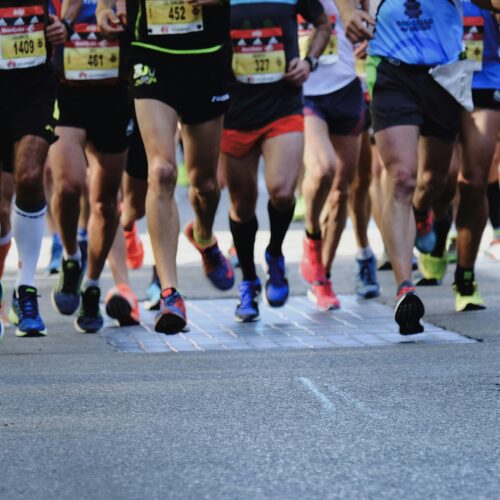Improve Your VO2max Pace To Prepare For Spring Races
Published on March 16, 2021
Your winter training has gone well. You have improved your fitness through long runs, tempo workouts and speed workouts. You may have run one or two virtual races to maintain contact with racing and stay motivated. The weather is improving and spring is around the corner. It’s time to step up the pace and run faster virtual races.
Winter training was consistent with your speed workout paces set at 10km pace. This helped you maintain leg speed and VO2max. (VO2max is the maximum amount of oxygen your body can use during exercise). To race faster you now need to improve the pace you run at your VO2max. And, to improve your VO2max pace you need to run your speed workouts faster at 5km pace.
Over the next several weeks the run clinic training schedule speed workouts are changed to 5km pace. The workouts include longer rest intervals to allow for more recovery and a faster pace.
For example winter workouts included:
Short Intervals: 10 x 2 minutes (at 10km pace) with [1 minute recovery], or,
Mixed Intervals: 3 sets of {3 minutes, 2 minutes, 1 minute} (at 10km pace) with [1 minute recovery]
Now the workouts are changed to a faster pace with more recovery time:
Short Intervals: 10 x 2 minutes (at 5km pace) with [2 minute recovery], or,
Mixed Intervals: 3 sets of {3 minutes, 2 minutes, 1 minute} (at 5km pace) with [2 minute recovery]
After four weeks of faster paced workouts, your pace at your VO2max should improve. Your VO2max as measured by Garmin or other running apps may improve or stay the same but the pace that you can run at your VO2max should improve. The running watch VO2max is a function of average training pace and average running heart rate. The running apps consider your average pace for the week (total km for the week/total time) and your average running heart rate. During this phase of 5km pace workouts, your average weekly training speed may not change much which is why your watch’s estimated VO2max may change either, but your ability to run faster at your VO2max should improve.
Other workout considerations
With the up-tick in your speed you should find that you can run at a faster pace in your other workouts. During the next six weeks you will want to continue your long runs and tempo workouts as usual. If you run more than three times per week then your other runs should remain at an easy pace to allow for recovery from the more intense speed workouts.
Strength training
It takes more effort to run your high speed sessions. You should maintain or add strength training two times per week to support your leg muscles while running faster. You can workout at home with body weight squats, calf drops, planks, crunches, push-ups, lunges, and chair dips. Also add running drills to your workout to add more running specific strength to your weekly routine.
Benefits
Rotating the kind of workouts your run throughout the year reduces stagnation, which is another reason transitioning from 10km pace to 5km pace is beneficial. The next four to six weeks of VO2max workouts will prepare your running for the spring and summer racing season. After this speedy phase of training you should notice a progression in your speed, strength and endurance. You will become a more efficient runner.



